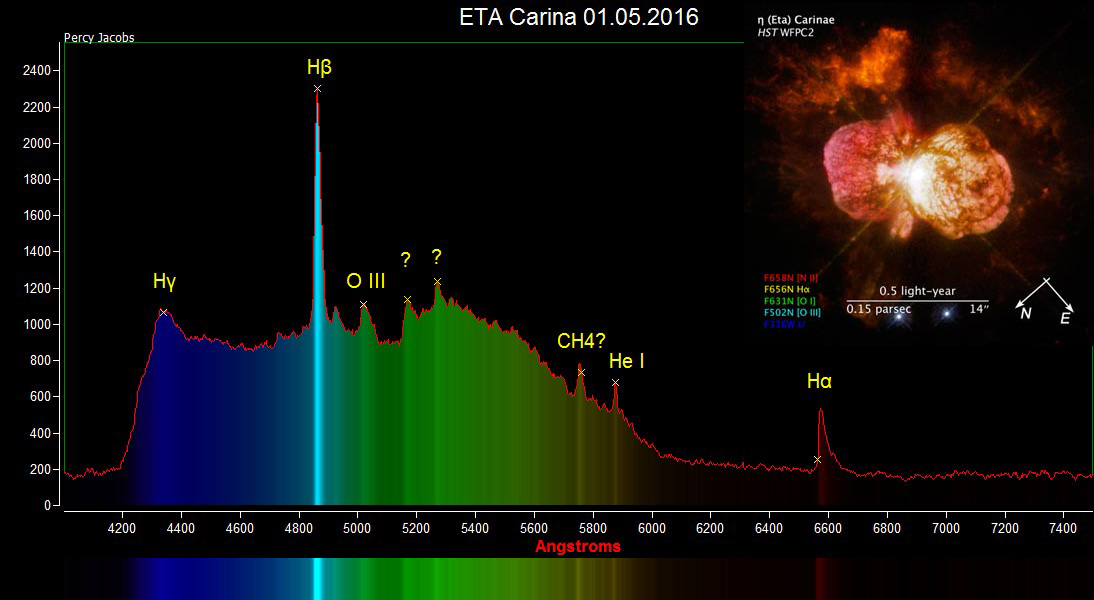ETA Carina Spectra
Amateur Spectrography

Image copyright: Percy Jacobs
Have you ever heard an astronomer confidently list the ingredients of some gas cloud or star that they are showing you through their telescope and wondered “But it’s so far away! How do you know?”
The answer is spectroscopy. When a rarefied gas is energised, it begins to glow. If we split the light of that glow with a prism, we find that light produced in this way is made up of only a few very specific colours, and by studying exactly which colours are visible, we can identify the molecules making up the gas.
Eta Carina is a group of at least two massive stars nearing the end of their lives, swelling and shrinking, and shedding their own outer layers. This process has surrounded the group with a vast cloud of gases, and the exposed inner layers light them up in hot ultraviolet radiation, causing them to glow with the colours of their ingredients.
This image is a composite of a Hubble Space Telescope image of Eta Carina, and a spectrum captured by amateur astronomer Percy Jacobs. The different peaks on the spectrum reveal the characteristic colours of different molecules making up the gas cloud around Eta Carina. He has marked out the peaks, and labelled the ones he has been able to identify.
For more information, see how NASA created their own similar image.
Picture taken on the 1st May 2016 from Pretoria, using a Rainbow Optics 200l/mm blazed diffraction grating, attached to a Nikon D5100, attached to a 80mm refractor. 10sec exposure at ISO 200. The photo was then processed through the software programme RSpec, and calibrated against the std Hβ line at 486.1nm. The attempt at identifying the other lines was done using the std references within RSpec and using Walkers Spectroscopic Atlas.
